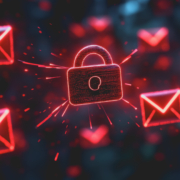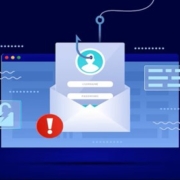Managed Technology for Hybrid Workforces
The modern workforce is no longer tied to a single location. Employees log in from home offices, coworking spaces, and satellite hubs. For businesses seeking productivity and flexibility the hybrid work model has become the standard. To support this shift successfully businesses need reliable, secure, and scalable technology platforms that keep teams connected and protected. At Remington Computer Services we specialize in managed technology solutions for hybrid workforces. Here is why your business must embrace modern technology management and how to do it effectively.
The Shift to Hybrid Work
Over the past few years the shift toward hybrid work has accelerated. Many employees now expect the flexibility of working remotely while remaining connected to their team and tools. Businesses that lean into this model notice benefits like improved employee satisfaction and access to a broader talent pool. However, this transition also introduces new challenges around device management security compliance and network connectivity. Without a managed approach these challenges can lead to operational gaps and risk.
Key Technology Components for Hybrid Teams
Device Management and Endpoint Security
When employees work from multiple locations using a range of devices businesses must maintain control and consistency. Managed device provisioning remote patching and monitoring help ensure every endpoint meets your security standards.
Secure Remote Access
Hybrid work requires secure access to corporate networks applications and data no matter where an employee connects from. Virtual private networks cloud access solutions and zero trust architectures are key to keeping your business secure and connected.
Collaboration and Communication Tools
For hybrid teams to be productive they need reliable tools for chat meetings file sharing and project collaboration. Managed deployment and support of these technologies ensure that adoption is high and issues are addressed quickly.
Network Infrastructure and Connectivity
Many remote workers use home networks that are less secure and more variable in performance than corporate environments. Having managed monitoring and support for connectivity helps ensure remote employees experience the same reliability as those in office.
Data Protection and Continuity
With a distributed workforce your data is spread across locations and devices. Backups disaster recovery and secure cloud storage become critical. A managed technology provider can implement automated backup processes protect data mobility and ensure business continuity in case of disruption.
Why Managed Technology Matters
When you outsource your technology management to a trusted partner you gain several benefits. First, your internal team can focus more on strategic goals rather than firefighting devices or connectivity issues. Second, your business gains access to expertise that stays current with emerging threats and best practices. Third, your infrastructure becomes more predictable and scalable. All of these help support a hybrid workforce that is dynamic and secure.
How Remington Computer Services Supports Hybrid Work
At Remington Computer Services we build comprehensive managed technology packages tailored for hybrid models. We start with an assessment of your current device fleet network access and data flow. We then design a roadmap that includes endpoint management secure remote access collaboration tools and data protection. Our proactive monitoring and maintenance mean problems are caught early and resolved fast. We also provide regular reporting and strategic planning so you can align your technology with business goals.
Best Practices for Success
- Define clear policies for remote access device use and data security.
- Choose unified collaboration tools that support chat video meetings and document sharing.
- Regularly update all devices apply patches and maintain security configurations.
- Monitor network performance and connectivity for remote workers and support upgrades when needed.
- Ensure backup and disaster recovery processes are tested and available across all locations.
- Partner with a managed technology provider that offers 24/7 monitoring support and strategic guidance.
Supporting a hybrid workforce means more than giving employees remote access. It demands a fully managed technology ecosystem that ensures devices collaboration and data remain secure and reliable no matter where your team works. With the right managed technology partner your business can confidently scale hybrid work and maintain productivity. Remington Computer Services is ready to help you navigate this shift and build a technology foundation that matches your ambitions.
Remington Computer Services has been serving the Rhode Island, Connecticut and Massachusetts area since 2010, providing IT Support such as technical helpdesk support, computer support and consulting to small and medium-sized businesses. Our experience has allowed us to build and develop the infrastructure needed to keep our prices affordable and our clients up and running. Schedule a complimentary consultation today.







